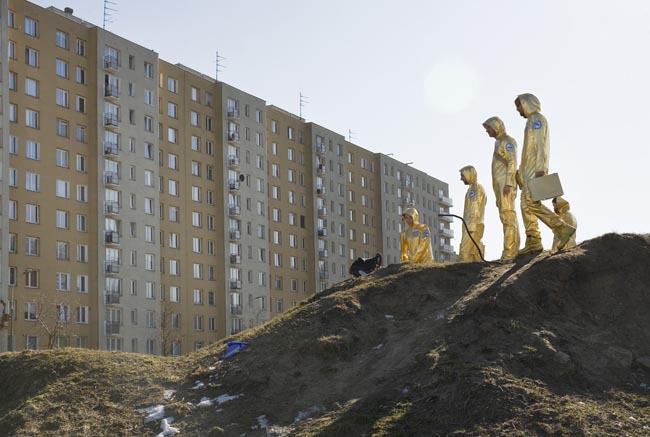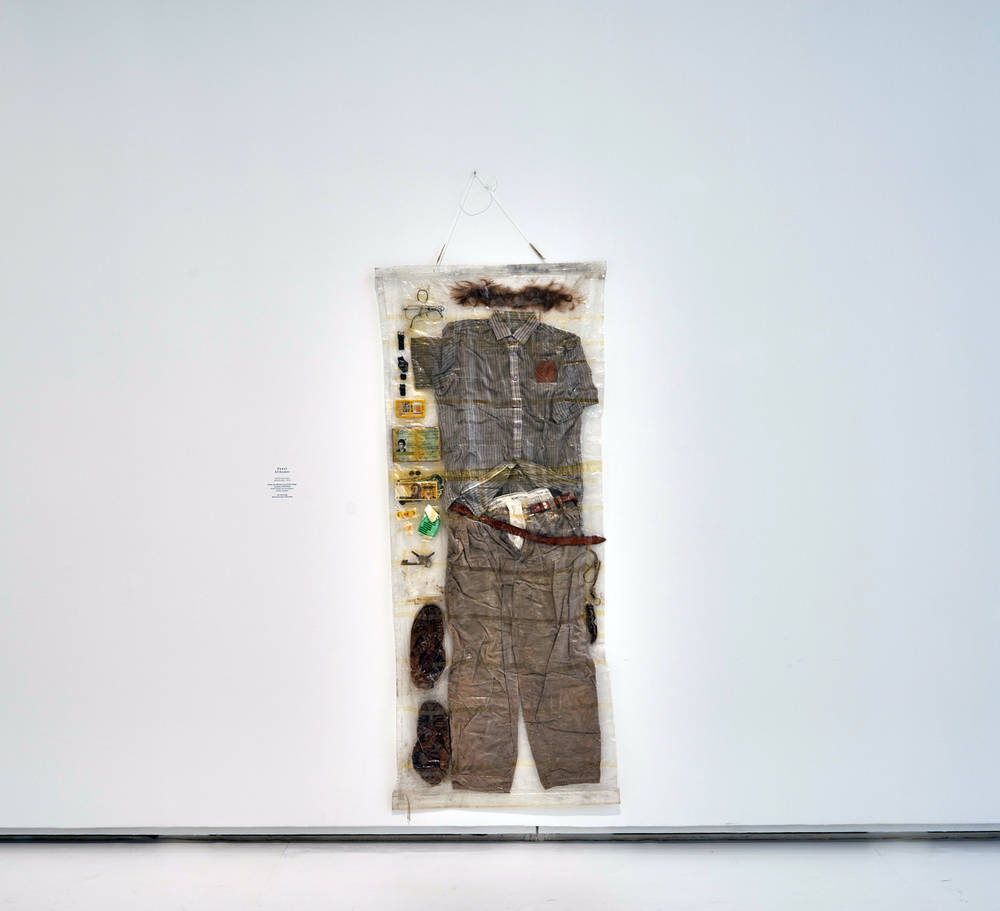Polish artist Paweł Althamer is forever finding new ways of unsettling viewers. His self-portrait at the ME exhibition shows everything about him in the minutest of details – it is only the artist himself who is missing.
When the professors at Akademia Sztuk Pięknych in Warsaw were presented with Paweł Althamer’s final-year project in 1993 they were in for a surprise. The reason: The budding artist himself was nowhere to be seen. What they did find was a hyperrealistic, life-sized self-portrait of Althamer made of wax and hair. There was also a video showing Althamer leaving the Academy building and heading the woods, where he proceeded to conduct “a dialog with nature”.

Paweł Althamer, Image via artmuseum.pl
Even though he sometimes uses the conventional techniques of sculpture Althamer, who was born in Warsaw in 1967, is not strictly speaking a sculptor. His oeuvre also includes performances and happenings, videos and installations. The work of this artist repeatedly features self-portraits and explores new ways of presenting himself. In 1991 Althamer put on a white suit and sat down outside in the freezing cold of winter for two hours – a self-portrait of himself as a snowman, in a manner of speaking.
Exploring an unknown planet
In 2002, Althamer once dressed up as a businessman and performed near the Sony Center on Potsdamer Platz in Berlin. In the performance he gradually divested himself of the office worker’s identity-forming attributes – the suit, the cell phone, the briefcase. In 1995, the artist donned a homemade spacesuit and investigated the Polish city of Bydgoszcz, filming his surroundings as if exploring an unknown planet.

Pawel Althamer, Wspólna sprawa/Common Task, 2008 – present, Image via db-artmag.de
One of the interesting things about Althamer’s entry for Münster’s renowned “Skulptur Projekte” in 2007 was its new perspectives on everyday routines. Althamer devised a route leading through a pedestrian and cycle crossing in a recreational area close to the city, across fields and meadows and out of town, before ending abruptly, one kilometer later, in a barley field. Before he did this, the artist observed how carefully pedestrians and cyclists kept to their own separate paths. In creating a path of his own, his objective was to question the Germans’ trust in rules and regulations. Having reached the end of this path, visitors found themselves confronted by a perplexing situation.
150 like-minded individuals in golden full bodysuits
Althamer often enlists people from outside the world of art to participate actively in his performances. For his project “Astronaut 2” at Documenta 10 in Kassel in 1997 Althamer engaged a homeless man to live in a converted trailer for the duration of the exhibition. Partly accessible to visitors, this trailer was set up in front of the Orangerie. Althamer also repeated his 1995 spaceman performance in Kassel. The recording was on show in the trailer.

Pawel Althamer, Path, 2007, Münster, Image via pietmondriaan.com
As part of "Neue Welt" (New World), a group exhibition at Frankfurter Kunstverein in 2001, Althamer invited migrants to appear at the opening as smartly-dressed curators, thus subverting accustomed practices. In 2012, he traveled to Minsk, the capital of Belarus, where he wandered along the streets with some 150 like-minded individuals wearing golden full bodysuits and masks until the action was halted by the police. Here again Althamer was playing with the boundaries of acceptance.
The artist is missing
Similarly, the 1994 self-portrait on show at the ME exhibition might be considered perplexing. It consists of the artist’s clothes and personal effects, parceled up in plastic film. Everything that Althamer, at the time 27 years old, had about his person went into this self-portrait, even his belt, his glasses and his underpants. Closer inspection also reveals his watch, his keys and the ID card that he had to reapply for, along with a number of banknotes, a testimony to the pride of this nation that had, at the time, only recently regained its independence.

In this work, it is as if the artist had shed his skin. It seems that he is leaving his clothes and possessions behind in order to make a new beginning, to establish a new identity. In these days of mass flight and migration this idea of a new beginning is not unusual. And this self-portrait reveals a great deal about the time of its genesis, allowing us to make a number of deductions about Althamer’s life at the time. It references the subject of the portrait without actually portraying him. The artist himself is missing, but this was even the case back when he completed his final project at art school.

How Hip Hop sings about its dead
Death plays a large part in Hip Hop. The tragic early passing of legends such as Biggie Smalls and Tupac, not to mention rising superstars like...

5 questions for Mary Messhausen and proddy produzentin
With the performance "Thonk piece: Hungry for Stains", drag queens Mary Messhausen and proddy produzentin will open the exhibition COSIMA VON BONIN....

HIP HOP IS BLACK CULTURE – NOT THE OTHER WAY AROUND
Hip hop’s 50th birthday is an occasion for us to listen to some old records and mixed tapes and to look back at the most important hip hop films of...

Now at the SCHIRN:COSIMA VON BONIN
The SCHIRN is showing a unique presentation of new and well-known works by COSIMA VON BONIN until June 9.